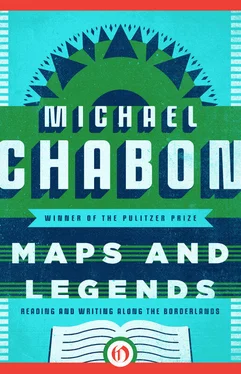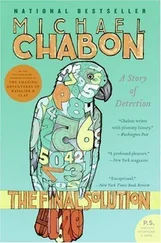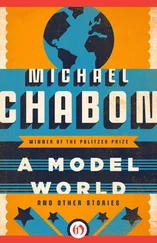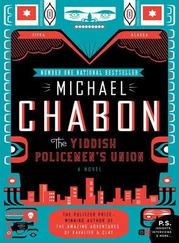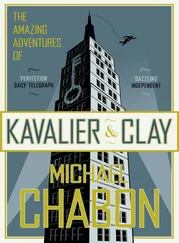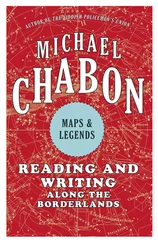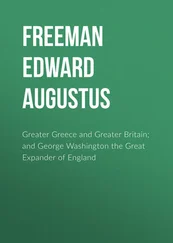Citizen Kane remains an acknowledged influence on the movies and the comics that followed it. The debt to American Flagg! while obvious, has been neglected. Its two great mid-’80s comics successors, Frank Miller’s The Dark Knight Returns and Watchmen by Alan Moore and Dave Gibbons, are hard to imagine without its example; those two books in turn influenced much that followed. American Flagg! in both its style and its concepts, fed the literary genre of cyberpunk that has since watered the entire landscape of popular culture, from comics and computer games to movies and television programs. Again, I’m not arguing that Chaykin invented dystopian comics or cyberpunk, only that he articulated a set of tropes and “packaged” them in a way that brought them to durable, ravishing life.
If American Flagg! were merely influential or innovative, its relative retreat from view in the past two decades would be more understandable; the same goes for its oft-remarked effectiveness as prophecy. Accurate prediction of the future, of its technologies and traumas, has always seemed to me to be the least interesting thing about science fiction. So Arthur C. Clarke predicted the global satellite network — so what? He also predicted the widespread use of hovercrafts and the dominance by 2001 of the commercial Earth-Moon space trade by Pan-Am Airlines (d. 1991). Such prescience or the obligation to display it is, more than bad writing, the element of a work of sf that most readily dooms it — regardless of whether the predictions turn out to be right or wrong. Every future we imagine is transformed inexorably into a part of our children’s understanding of their past, of the assumptions their parents and grandparents could not help but make. If American Flagg! successfully predicted certain aspects of the hundred-ply world we live in now — and I think of it every time I see a lurid news headline about a pedophilic pop-star crawl under breaking footage of carnage or disaster, while a network meat-puppet intones the latest official spin — then that very success would condemn it to seem, in time, eternally passé.
It is not, ultimately, the brilliance of its technique or the aptness of the future it imagined that makes American Flagg! an enduring, necessary, and neglected pleasure, but the impeccable pop artisanship that produced it. So many of the purest pop masterpieces, from Michael Ritchie’s Smile to Emmit Rhodes’s self-titled first solo album, are neglected ones; even an acknowledged pop masterpiece like Pet Sounds has never quite shed its initial air of puzzlement-inducing letdown. American Flagg! has all the modern virtues that would seem to guarantee its place in the pantheon of seminal pop artifacts: irony, attitude, knowingness, cynicism, a familiarity with corruption and existential bad faith, a rapturous, at times hyperbolic sense of style, and that insatiable compulsion, mentioned earlier, to undercut. Its hero, Reuben Flagg, is not just a preening, self-regarding piece of beefcake — he’s a redundant one, having been replaced, in his starring role on Mark Thrust, Sexus Ranger, by a hologram; and a self-conscious one. Nobody is more aware of the irony and implicit satire of his situation than Flagg. On the surface, he ought to be an ideal hero, and American Flagg! an ideal narrative, for our time.
But for all his cynicism and archness of eyebrow, Howard Chaykin, like so many pop artisans, draws the greatest part of his strength from the source that underlies all true visions of pop perfection: romance. Chaykin is, fundamentally, a romancer; “a storyteller,” as the cliché has it, “in the grand tradition.” Cynical, pompous or jaundiced, self-aware, embittered or corrupted, his heroes remain heroes, and the stories he tells never stray very far from their roots in Sabatini novels, The Shadow and Doc Savage, Chandler, Hammett, the films of Michael Curtiz. True friendship, true love, dying for a belief, self-sacrifice, even American ideals — such things, though he almost hates to admit it, are still possible in Chaykin’s work. It’s the instinct for popular narrative, for everything that Chaykin, in conversation, dismissively and affectionately terms “pulp,” that guarantees Chaykin’s status as a true pop artisan, neglect and all. But it’s that deep ambivalence toward romance, the need to undercut, that brings a problematic wobble to all Chaykin’s work. Like Paul Simon, who at once has felt and knows to be illusory the transcendent rapture of a killer hook, Chaykin’s sense of romance and its conventions is always, at the same time, a sense of betrayal by them. In his earliest comics, drawing flashy, somewhat raw adaptations of Fritz Leiber’s (already ironic) sword and sorcery tales, and creating short-lived titles such as Iron Wolf and The Scorpion, romance, the unabashed fabulating impulse of the storyteller, tended to win out. A cool head, quick reflexes, a steadfast purpose, and the love or memory of a good woman — along with that crucial Sabatinian “gift for laughter and a sense that the world was mad”—these were sufficient, or nearly so, to any challenge or evil the hero might encounter. In his recent work, although Chaykin’s technique has attained the kind of effortless polish that, as with all experienced artists, is a synonym for correctly valuing his own strengths and weaknesses, the cynicism, the undercutting, the mockery, revisionism, and satire have tended to gain the upper hand.
American Flagg! stands at the glorious midpoint, at that difficult fulcrum between innocence and experience, romance and disillusion, adventure and satire, the unashamedly commercial and the purely aesthetic, between the stoned, rangy funkiness of the seventies and the digitized cool of the present day, between a time when outrage was a moral position and a time when it has become a way of life. Such balancing acts have always been the greatest feats of American popular art.
DARK ADVENTURE ON CORMAC MCCARTHY’S THE ROAD
1.
CHARLTON HESTON AND A savagely coiffed vixen, wrapped in animal skins, riding horseback along a desolate seashore, confronted by the spike-crowned ruin of the Statue of Liberty half-buried in the sand: everyone knows how the world ends. First radiation, plague, an asteroid, or some other cataclysm kills most of humankind. The remnants mutate, lapse into feudalism, or revert to prehistoric brutality. Old cults are revived with their knives and brutal gods, while tiny noble bands cling to the tatters of the lost civilization, preserving knowledge of machinery, agriculture, and the missionary position against some future renascence, and confronting their ancestors’ legacy of greatness and destruction.
Ambivalence toward technology is the underlying theme, and thus we are accustomed to thinking of stories that depict the end of the world and its aftermath as essentially science fiction. These stories feel like science fiction too, because typically they deal with the changed nature of society in the wake of cataclysm, the strange new priesthoods, the caste systems of the genetically stable, the worshipers of techno-death, the rigid pastoral theocracies in which mutants and machinery are taboo, etc.; for inevitably these new societies mirror and comment upon our own. Science fiction has always been a powerful instrument of satire, and thus it is often the satirist’s finger that pushes the button or releases the killer bug.
This may help to explain why the post-apocalyptic mode has long attracted writers not generally considered part of the science-fiction tradition. It’s one of the few subgenres of science fiction, along with stories of the near future (also friendly to satirists), that may be safely attempted by a mainstream writer without incurring too much damage to his or her credentials for seriousness. The anti — science fiction prejudice among some readers and writers is so strong that in reviewing a work of science fiction by a mainstream author a charitable critic will often turn to words such as “parable” or “fable” to warm the author’s bathwater a little, and it is an established fact that a preponderance of religious imagery or an avowed religious intent can go a long way toward mitigating the science-fictional taint, which also helps explain the appeal to mainstream writers such as Walker Percy of the post-apocalyptic story, whose themes of annihilation and re-creation are so easily indexed both to the last book of the New Testament and the first book of the Old. It’s hard to imagine the author of Love in the Ruins writing a space opera.
Читать дальше
Конец ознакомительного отрывка
Купить книгу
